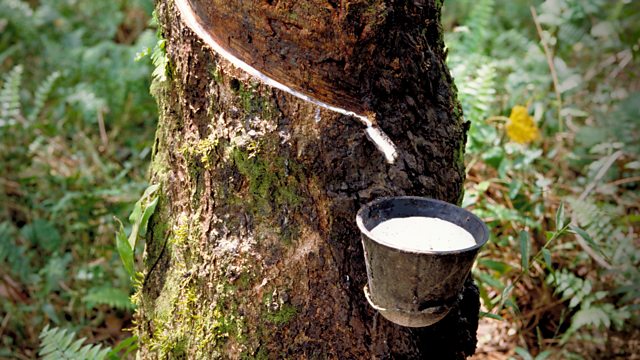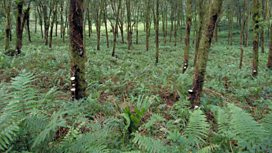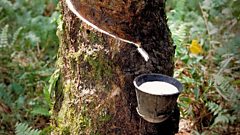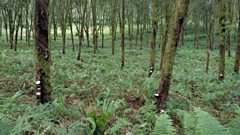Tapping into Rubber
How the early dissemination of rubber seeds across the globe was the key to rubber's success. With Kathy Willis. From 2014.
Natural rubber derived from latex had long been a curiosity. When Nelson Goodyear perfected his method of vulcanisation of rubber and showcased its applications at the Great Exhibition of 1851 the possibilities now seemed endless.
But by 1860 demand was outstripping supply from Brazil. Kathy Willis examines how Kew was charged with getting seeds of this economically vital plant out of South America to germinate at Kew Gardens, and then to send seedlings off to cultivate in far flung reaches of the Empire.
The historian Emma Reisz explains how Kew acted as the international clearing house for smuggled seeds out of Brazil. Historian Jim Endersby sheds light on why Kew put its faith in one man: Henry Wickham, a travelling plant hunter with dubious botanical credentials. We hear from Mark Nesbitt, curator of Kew's economic botany collection, on how, despite rubber being recognised as an economically essential plant for the British Empire's economy, the whole business of transporting and nurturing the seedlings turned out to be a comically hit and miss affair.
Producer Adrian Washbourne.
Last on
More episodes
Previous
Next
![]()
In pictures: The story of rubber.
Clips
-
![]()
Plants: From Roots to Riches - Tapping into Rubber
Duration: 13:32
-
![]()
The Plant That Changed The World
Duration: 00:24
Broadcasts
- Tue 29 Jul 2014 13:45大象传媒 Radio 4 FM
- Tue 1 Mar 2016 14:15大象传媒 Radio 4 Extra
- Wed 2 Mar 2016 02:15大象传媒 Radio 4 Extra
- Tue 4 Jul 2017 14:15大象传媒 Radio 4 Extra
- Wed 5 Jul 2017 02:15大象传媒 Radio 4 Extra
- Tue 9 Jul 2019 14:15大象传媒 Radio 4 Extra
- Wed 10 Jul 2019 02:15大象传媒 Radio 4 Extra
Royal Botanic Gardens, Kew
Delve deeper into plant science and find out more about plants featured in the series
The Power of Plants
Discover a selection of programmes relating to plants.
Podcast
-
![]()
Plants: From Roots to Riches
Our relationship with plants: a major new history by Kew's science director Kathy Willis.





